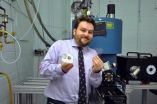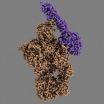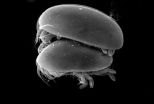(Press-News.org) Boston – One third of American women of childbearing age are battling obesity, a condition that affects their health and their chances of getting pregnant. Obese women often have poor reproductive outcomes, but the reasons why have not been clearly identified. Now, a novel study led by Catherine Racowsky, PhD, director of the Assisted Reproductive Technologies Laboratory at Brigham and Women's Hospital (BWH), and performed by Ronit Machtinger, M.D., of BWH, in collaboration with Catherine Combelles, PhD, of Middlebury College, gains further insight into the underlying mechanisms. The study will be published online on September 11 in the journal Human Reproduction.
Racowsky and her colleagues examined 276 mature human eggs that failed to fertilize from women who were undergoing in vitro fertilization (IVF) procedures. Of these, 105 eggs were from severely obese women, defined as having a body mass index (BMI) between 35.0 and 50.1 kg/m2, and 171 eggs were from women with a normal BMI, defined as between 18.5 and 24.9 kg/m2. BMI is calculated from a person's height and weight and is considered a reliable indicator of body fatness for most people.
"This study is the first to shed light on how BMI might adversely affect egg quality in women," said Dr. Racowsky. "These observations provide novel insight into a possible cause for the reduced likelihood of success with IVF in severely obese women."
According to Dr. Racowsky, in order for an egg to have the best chance of fertilizing and supporting embryo development, it should be "mature" with one spindle (a critical egg structure) on which is attached one organized set of chromosomes. This study found severely obese women have a much greater chance of having eggs with multiple spindles and disorganized chromosomes. Specifically:
Nearly 60 percent of the eggs from the severely obese group had two spindles, while only 35 percent of the eggs from the normal BMI group had two spindles.
Among the eggs with one spindle, nearly 30 percent of the eggs from the severely obese group had disorganized chromosomes, while only 9 percent of the eggs from the normal BMI group had disorganized chromosomes.
Dr. Racowsky points out that this study only used eggs that were stimulated through IVF and that failed to fertilize, so it is not known if these results can be broadly applied to all eggs.
"More research is needed to determine what is causing the spindle abnormalities and disorganized chromosomes," said Dr. Racowsky.
### END
Study provides insight into why severely obese women have difficulty getting pregnant from IVF
Brigham and Women's Hospital researchers discover an underlying egg problem in women with a high body mass index
2012-09-11
ELSE PRESS RELEASES FROM THIS DATE:
U of Toronto-led team induces high-temperature superconductivity in a semiconductor with Scotch tape
2012-09-11
September 10, 2012-- Issued by the UNIVERSITY OF TORONTO
Under strict embargo by Nature Communications until Tuesday, September 11, 11 a.m. EST
An international team led by University of Toronto physicists has developed a simple new technique using Scotch poster tape that has enabled them to induce high-temperature superconductivity in a semiconductor for the first time. The method paves the way for novel new devices that could be used in quantum computing and to improve energy efficiency.
"Who would have thought simply sticking things together can generate entirely ...
New discovery related to gum disease
2012-09-11
A University of Louisville scientist has found a way to prevent inflammation and bone loss surrounding the teeth by blocking a natural signaling pathway of the enzyme GSK3b, which plays an important role in directing the immune response.
The discovery of UofL School of Dentistry researcher David Scott, PhD, and his team recently published on-line first in the journal Molecular Medicine. The finding not only has implications in preventing periodontal disease, a chronic inflammatory disease that causes tooth loss, but also may have relevance to other chronic inflammatory ...
Breast cancer risks acquired in pregnancy may pass to next 3 generations
2012-09-11
Chemicals or foods that raise estrogen levels during pregnancy may increase cancer risk in daughters, granddaughters, and even great-granddaughters, according to scientists from Virginia Tech and Georgetown University.
Pregnant rats on a diet supplemented with synthetic estrogen or with fat, which increases estrogen levels, produce ensuing generations of daughters that appear to be healthy, but harbor a greater than normal risk for mammary cancer, the researchers report in today's Nature Communications.
Although the findings have not yet been validated in humans, the ...
Unnecessary oil disasters
2012-09-11
The BP oil disaster in the Gulf of Mexico 2010 could have been avoided if the experiences of earlier disasters had been put to use, researcher Charles Woolfson, Linköping university, claims. The United States government is now accusing BP of gross negligence and deliberate misconduct, and taking the company to court.
On April 20, 2010, the Deepwater Horizon oil rig exploded in the ocean south of the southern coast of the US. The explosion led to the deaths of eleven people and an unfathomable environmental catastrophe.
Charles Woolfson, former professor of Labour Sociology ...
Serious games could be integrated into surgical training subject to validation
2012-09-11
Serious gaming can be used to enhance surgical skills, but games developed or used to train medical professionals need to be validated before they are integrated into teaching methods, according to a paper in the October issue of the surgical journal BJS.
Researchers from The Netherlands reviewed 25 research studies covering 30 serious games published between 1995 and 2012.
"Many medical professionals may still have a rather out-dated view of the average gamer as being someone who is too young to vote, afraid of daylight and busy killing mystical dwarves in their parent's ...
Chain reaction in the human immune system trapped in crystals
2012-09-11
VIDEO:
The animation shows how the MASP-2 (blue) attaches itself to the complement protein C4 (orange), and the structural rearrangements that occur in the C4 due to this. Note that although...
Click here for more information.
The complement system is part of the innate immune system and is composed of about 40 different proteins that work together to defend the body against disease-causing microorganisms. The complement system perceives danger signals in the body by recognising ...
More traffic deaths in wake of 9/11
2012-09-11
This press release is available in German.
In the wake of the terrorist attacks of September 11, 2001, many Americans started driving more due to a fear of flying – and lost their lives in traffic accidents. But why did this happen more frequently in some states than in others? And why didn't Spanish driving habits change in the same way following the 2004 train bombings in Madrid? Wolfgang Gaissmaier and Gerd Gigerenzer from the Harding Center for Risk Literacy at the Max Planck Institute for Human Development in Berlin present new findings on this topic in the ...
Lights off? International experts call attention to dangers of exposure to light at night
2012-09-11
"The most important thing for us is to raise awareness of the dangers of artificial light at night and we have already come a long way now that the American Medical Association (AMA) recently announced its new policy recognizing adverse health effects of exposure to light at night and encouraging further research into the matter," said Prof. Abraham Haim, a leading authority on light pollution, who coordinated the 21st International Congress of Zoology (ICZ) that was held last week at the University of Haifa, Israel.
The panel of world experts discussed "Light Pollution ...
Researchers devise more accurate method for predicting hurricane activity
2012-09-11
Researchers from North Carolina State University have developed a new method for forecasting seasonal hurricane activity that is 15 percent more accurate than previous techniques.
"This approach should give policymakers more reliable information than current state-of-the-art methods," says Dr. Nagiza Samatova, an associate professor of computer science at NC State and co-author of a paper describing the work. "This will hopefully give them more confidence in planning for the hurricane season."
Conventional models used to predict seasonal hurricane activity rely on classical ...
A minute crustacean invades the red swamp crayfish
2012-09-11
The small ostracod Ankylocythere sinuosa measures no more than half a millimetre in length and lives on other crayfish. And, Spanish scientists have discovered it for the first time in Europe. The finding suggests that it arrived along with the invader crayfish Procambarus clarkii some 30 years ago but it is still unknown whether it can invade other crustacean species or whether it benefits or damages the expansion of the already established red swamp crayfish.
The red swamp crayfish (Procambarus clarkii) originates from the USA and Mexico and has been present in the Iberian ...
LAST 30 PRESS RELEASES:
Making lighter work of calculating fluid and heat flow
Normalizing blood sugar can halve heart attack risk
Lowering blood sugar cuts heart attack risk in people with prediabetes
Study links genetic variants to risk of blinding eye disease in premature infants
Non-opioid ‘pain sponge’ therapy halts cartilage degeneration and relieves chronic pain
AI can pick up cultural values by mimicking how kids learn
China’s ecological redlines offer fast track to 30 x 30 global conservation goal
Invisible indoor threats: emerging household contaminants and their growing risks to human health
Adding antibody treatment to chemo boosts outcomes for children with rare cancer
Germline pathogenic variants among women without a history of breast cancer
Tanning beds triple melanoma risk, potentially causing broad DNA damage
Unique bond identified as key to viral infection speed
Indoor tanning makes youthful skin much older on a genetic level
Mouse model sheds new light on the causes and potential solutions to human GI problems linked to muscular dystrophy
The Journal of Nuclear Medicine ahead-of-print tip sheet: December 12, 2025
Smarter tools for peering into the microscopic world
Applications open for funding to conduct research in the Kinsey Institute archives
Global measure underestimates the severity of food insecurity
Child survivors of critical illness are missing out on timely follow up care
Risk-based vs annual breast cancer screening / the WISDOM randomized clinical trial
University of Toronto launches Electric Vehicle Innovation Ontario to accelerate advanced EV technologies and build Canada’s innovation advantage
Early relapse predicts poor outcomes in aggressive blood cancer
American College of Lifestyle Medicine applauds two CMS models aligned with lifestyle medicine practice and reimbursement
Clinical trial finds cannabis use not a barrier to quitting nicotine vaping
Supplemental nutrition assistance program policies and food insecurity
Switching immune cells to “night mode” could limit damage after a heart attack, study suggests
URI-based Global RIghts Project report spotlights continued troubling trends in worldwide inhumane treatment
Neutrophils are less aggressive at night, explaining why nighttime heart attacks cause less damage than daytime events
Menopausal hormone therapy may not pose breast cancer risk for women with BRCA mutations
Mobile health tool may improve quality of life for adolescent and young adult breast cancer survivors
[Press-News.org] Study provides insight into why severely obese women have difficulty getting pregnant from IVFBrigham and Women's Hospital researchers discover an underlying egg problem in women with a high body mass index



